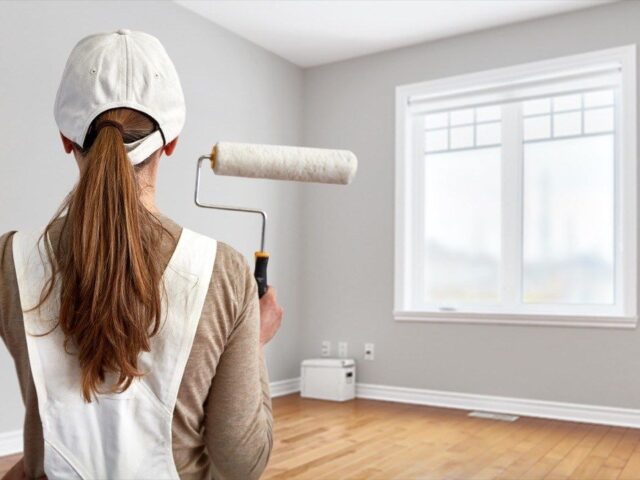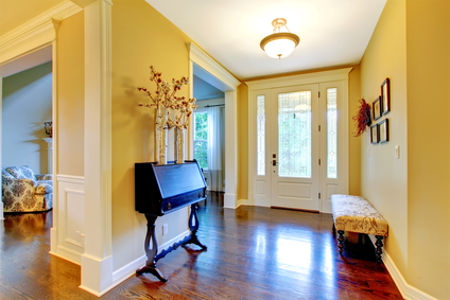Professional Lakewood Interior Painting Services for a Fresh Home Makeover
Professional Lakewood Interior Painting Services for a Fresh Home Makeover
Blog Article
Enhance Your Inside Design With Comprehensive Color Assessment
The assimilation of shade examination right into interior layout provides a special chance to fine-tune and raise the aesthetic and psychological resonance of an area. By engaging with a skilled color specialist, you can navigate the intricacies of shade option, ensuring that your options not only complement building features but additionally reverberate with personal style and emotional effect.
Advantages of Shade Examination

In addition, color consultation help in maximizing natural light and optimizing spatial perception. Lighter tones can make an area appear even more large, while darker shades create an intimate setting. Cleveland Metro Painting Specialists. This strategic application of shade can substantially influence the overall setting of any type of indoor area
Furthermore, specialist specialists have an extensive understanding of current fads and ageless classics, guaranteeing that the selected shades will certainly remain appealing over time. This insight can conserve customers from expensive redesigns in the future. Finally, shade consultation empowers clients by supplying them with a clear vision and direction, cultivating self-confidence in their design selections and inevitably leading to an extra effective and gratifying interior decoration outcome.
Comprehending Color Psychology
The value of color psychology in interior decoration can not be overemphasized, as it delves right into the psychological and psychological results that different colors can stimulate in people. Shades can affect state of mind, behavior, and even performance, making them a crucial consideration in any kind of style task.
As an example, cozy colors such as red, orange, and yellow are typically related to energy and warmth. They can stimulate feelings of exhilaration and convenience, making them ideal for social areas like living cooking areas or rooms. Conversely, trendy colors like blue, green, and purple have a tendency to evoke peace and tranquility, making them ideal for bedrooms or reflection areas.
In addition, the usage of neutral tones can create a well balanced atmosphere by enabling the bolder shades to stick out without frustrating the detects. Recognizing these mental influences enables designers to produce rooms that not only look visually pleasing yet also advertise emotional health.
Including shade psychology right into interior design entails a thoughtful choice of shades customized to the intended function of each space, ultimately boosting the total experience for its occupants. This awareness is crucial for achieving a unified and practical indoor setting.
The Shade Wheel Explained
Understanding the partnerships between shades is crucial for efficient interior decoration, and the color wheel works as a beneficial tool in this process. The shade wheel, developed by Isaac Newton in the 17th century, highlights the spectrum of colors organized in a round layout. It makes up primaries-- red, blue, and yellow-- that can not be created by blending various other colors. her latest blog Additional colors, developed by integrating primaries, Get More Information include environment-friendly, orange, and purple. Tertiary shades arise from mixing a key and a second color, causing colors such as blue-green and red-orange.
The shade wheel aids developers grasp the partnerships in between colors, consisting of complementary, similar, and triadic schemes. Complementary shades, located opposite each various other on the wheel, create lively contrasts that can stimulate a space. Comparable shades, situated beside one another, provide a natural and unified appearance. Triadic plans make use of three evenly spaced colors, using equilibrium and visual rate of interest.
Using the color wheel in interior decoration not only improves visual charm but additionally stimulates particular feelings and environments, making it an important reference for color appointment. Understanding these partnerships ultimately empowers designers to create spaces that are both aesthetically exciting and practical.
Selecting the Right Combination
Often, picking the right combination is a crucial consider accomplishing an effective interior decoration job. An appropriate color pattern can unify a room, enhance its features, and evoke desired feelings. To begin, consider the purpose of the room. Various rooms serve different functions and call for schemes that reflect their intended use; for circumstances, relaxing shades such as soft blues or eco-friendlies work well in bed rooms, advertising leisure.
Light can significantly alter how colors appear, so it is necessary to assess the space at various times of the day. An unified scheme should enhance these functions, producing a cohesive look throughout the room.
When picking shades, use the 60-30-10 regulation, which suggests that 60% of the room must be a dominant color, 30% a second shade, and 10% an accent shade. This proportion guarantees equilibrium and visual interest (Cleveland Metro Painting Specialists). Ultimately, sample shades on the walls before dedicating, as this permits you to see just how the hues engage with each other and the total atmosphere they develop in your interior layout task.
Working With a Color Specialist

When collaborating with a shade consultant, the procedure normally begins with a preliminary appointment. Throughout this meeting, you'll discuss your vision, choices, and the existing elements in your space. The professional will examine your requirements and might advise specific color combinations that straighten with your goals.
After developing a direction, the specialist will give samples and visual help to help you picture the suggested color design. This action is crucial, as colors can appear differently under varying lighting problems.
In addition, a shade professional can assist you in choosing complementary home furnishings, artwork, and devices to balance with your chosen combination. By collaborating carefully, you can attain a polished aesthetic that boosts your insides and produces a welcoming atmosphere. Eventually, the proficiency of a shade expert can significantly enhance the total impact of your design project.
Conclusion
In recap, thorough shade assessment offers as an important tool for boosting indoor layout. By leveraging expert knowledge of color psychology and spatial characteristics, a customized shade combination can be developed to stimulate specific feelings and create a harmonious setting.
By engaging with a skilled color expert, you can browse the intricacies of color option, ensuring that your options not only complement architectural features yet additionally resonate with personal design and psychological effect. It consists of main colors-- red, blue, and yellow-- that can not be created by mixing various other colors.The shade wheel aids designers understand the connections between colors, consisting of complementary, similar, and triadic plans.When selecting shades, make use of the 60-30-10 regulation, which suggests that 60% of the area need to be a dominant shade, 30% a second shade, and 10% an accent color. By leveraging expert understanding of color psychology and spatial characteristics, a tailored color combination can be established to stimulate details emotions and develop a harmonious setting.
Report this page